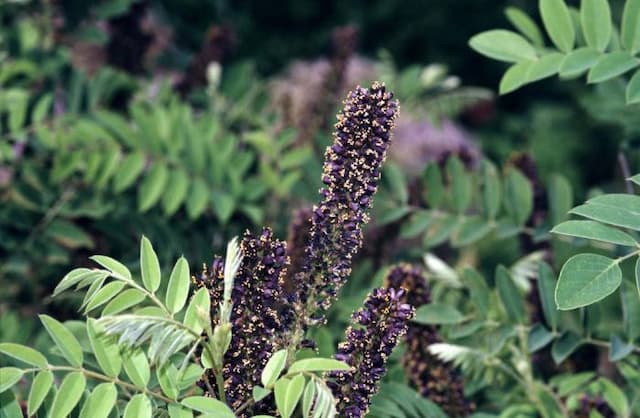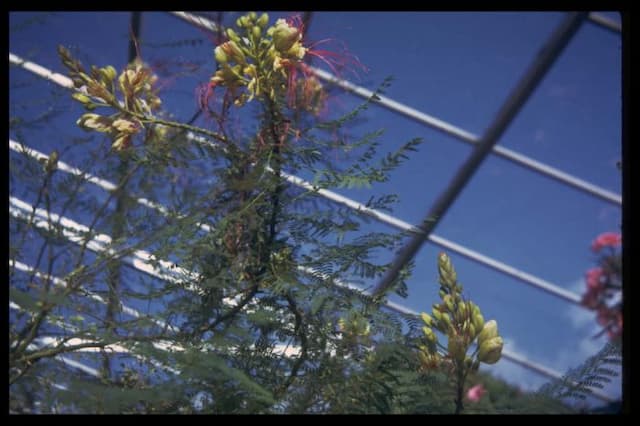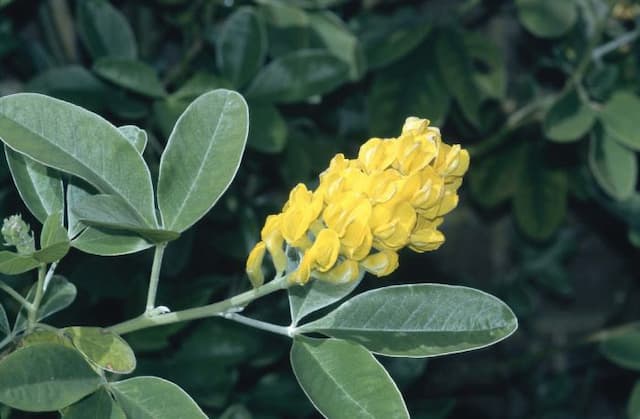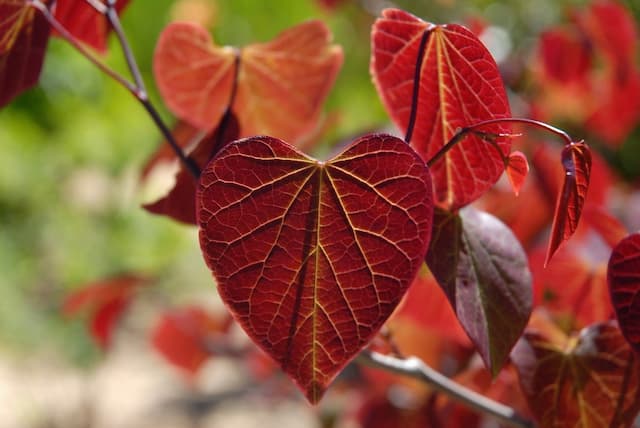Lesser trefoil Trifolium dubium

ABOUT
The plant known by the common name lesser trefoil is a small and delicate perennial herb. The most distinguishing features of this plant are its trifoliate leaves, meaning each leaf is composed of three small, heart-shaped leaflets. These leaflets are bright green with a slight paleness to the veins. When examining the structure of the plant, observers will find that the stems are slender, sprawling, and have a tendency to root at the nodes when they touch the ground. The flowers of lesser trefoil are quite small, displaying a pale yellow color and clustered together in tight, spherical heads. They are typical of the clover family, with each individual flower resembling a tiny pea flower, bearing the distinct petal structure with a top banner, two side wings, and a boat-shaped keel. This plant usually blooms during the spring and summer months, lending it an appearance sprinkled with these miniature yellow flower heads. Additionally, lesser trefoil produces fruit that is concealed within the withered, persistent corolla. This inconspicuous fruit does not typically draw the eye, and many might overlook it when immersing in the overall delicate appearance of the plant. In general, lesser trefoil has a creeping habit, spreading along the ground and can often be found in lawns, fields, and open, grassy areas. It is considered a low-growing plant, with all parts of it—leaves, flowers, and stems—contributing to a rather lush carpet when found in abundance. Despite being regarded as a weed in some areas, its ability to fix nitrogen enables it to contribute to the health of the soil and ecosystems in which it grows.
About this plant
 Names
NamesFamily
Fabaceae.
Synonyms
Lesser Trefoil, Suckling Clover, Little Hop Clover, Shamrock.
Common names
Amoria dubia, Trifolium campestre subsp. procumbens, Trifolium minus, Trifolium filiforme, Trifolium campestre, Trifolium procumbens, Trifolium nanum, Trifolium tenue, Trifolium dubium var. nanum, Trifolium campestre var. microcephalum, Trifolium filiforme var. nanum, Trifolium campestre var. nanum.
 Toxicity
ToxicityTo humans
The plant known as lesser trefoil is generally not considered toxic to humans. There are no well-documented cases or significant concerns regarding the toxicity of lesser trefoil for human consumption. As with many plants, it is possible that some individuals may experience mild allergic reactions, but it is not known to be poisonous or to cause serious symptoms of poisoning when ingested in typical quantities.
To pets
The plant known as lesser trefoil is not typically considered toxic to pets either. It is not listed among the commonly recognized poisonous plants for household pets such as dogs and cats. As such, ingestion of lesser trefoil by pets does not typically result in a toxic reaction or symptoms of poisoning. Even so, individual pets may have sensitivity or allergies to any plant, and ingestion of non-food plants can sometimes lead to gastrointestinal upset or other mild reactions.
 Characteristics
CharacteristicsLife cycle
Annuals
Foliage type
Deciduous
Color of leaves
Green
Flower color
Yellow
Height
0.5 feet (15 cm)
Spread
0.5 feet (15 cm)
Plant type
Herb
Hardiness zones
Varies
Native area
Europe
Benefits
 General Benefits
General Benefits- Nitrogen Fixation: As a member of the legume family, Trifolium dubium improves soil health by fixing atmospheric nitrogen, turning it into a form that plants can use.
- Soil Improvement: The plant’s roots help to prevent soil erosion and can improve soil structure over time.
- Biodiversity Support: Trifolium dubium (also known as Lesser Trefoil or Suckling Clover) supports a range of pollinators, such as bees, by providing an important source of nectar.
- Livestock Fodder: It can be used as forage for livestock, particularly sheep, providing a nutritious food source.
- Ground Cover: This plant acts as a natural ground cover, suppressing weeds and protecting the soil from the harsh effects of the sun.
- Aesthetic Value: With its small yellow flowers, it can add beauty to natural landscapes and cultivated garden areas.
- Wildlife Habitat: Serves as a habitat for various small insects and animals, contributing to local ecosystem diversity.
- Agricultural Indicator: Presence of Trifolium dubium can indicate certain soil conditions, such as low nitrogen, and can be used by farmers to gauge soil health.
 Medical Properties
Medical Properties- Trifolium dubium, commonly known as lesser trefoil or small hop clover, does not have a well-documented history of medicinal use and is not commonly recognized for any specific therapeutic properties. Therefore, there are no widely accepted medical uses to list.
 Air-purifying Qualities
Air-purifying QualitiesThis plant is not specifically known for air purifying qualities.
 Other Uses
Other Uses- Trifolium dubium, commonly known as lesser trefoil, can be used as a natural dye, giving a range of colors from yellows to greens depending on the mordant used.
- In agriculture, lesser trefoil serves as a cover crop that can improve soil structure and fertility by fixing nitrogen and reducing soil compaction.
- It serves as an important food source for pollinators, including bees and butterflies, helping to maintain the health of local ecosystems.
- As part of a wildflower mix, lesser trefoil can help support biodiversity within meadows and garden areas by providing habitat diversity.
- The plant can also be used in permaculture designs as a low-maintenance ground cover that suppresses weeds and prevents erosion.
- Lesser trefoil can be used in education for children to demonstrate life cycles and the role of plants in ecosystems, providing a useful tool for schools and outdoor programs.
- In decorative arrangements, fresh or dried lesser trefoil can be used thanks to its small, clover-like appearance.
- Greater trefoil can be incorporated into lawn seed mixes to create a more diverse and sustainable grassland that requires less mowing and maintenance.
- Farmers can use lesser trefoil as forage for livestock, particularly in organic systems that prioritize natural feed sources.
- When included in rotational grazing systems, lesser trefoil can help break the life cycles of certain parasites that affect grazing animals.
Interesting Facts
 Feng Shui
Feng ShuiThe Lesser trefoil is not used in Feng Shui practice.
 Zodiac Sign Compitability
Zodiac Sign CompitabilityThe Lesser trefoil is not used in astrology practice.
 Plant Symbolism
Plant Symbolism- Luck: Trifolium dubium, commonly known as lesser trefoil, is often associated with good luck, particularly because it is commonly mistaken for the four-leaf clover, which is a well-known symbol of luck.
- Promise: In the language of flowers, or floriography, lesser trefoil can signify a promise or commitment, perhaps due to its resilient and persistent nature.
- Youth: The vibrant green color and association with springtime can make lesser trefoil emblematic of youth and renewal.
 Water
WaterLesser trefoil should be watered moderately, ensuring the soil stays moist but not waterlogged. During the growing season, typically spring and summer, watering once a week with around one gallon per square yard is ideal. However, the frequency should be adjusted depending on rainfall and temperature, with less frequent watering required during cooler, wet periods and more frequent during hot, dry spells. During dormant periods in the fall and winter, reduce watering but do not allow the soil to completely dry out.
 Light
LightLesser trefoil thrives best in full sunlight to partial shade. A spot that receives 4 to 6 hours of direct sunlight along with some dappled shade during the hottest part of the day is optimal. Avoid deep shade locations as this can impede the plant's growth and flowering potential.
 Temperature
TemperatureLesser trefoil is tolerant of a wide range of temperatures but grows best between 60°F and 77°F. While it can survive in temperatures as low as 20°F and as high as 85°F, sustained temperatures outside the ideal range may stress the plant and inhibit growth.
 Pruning
PruningLesser trefoil rarely requires pruning, but if it becomes too dense or leggy, light trimming can be done in the spring or after flowering to maintain its shape and encourage new growth. Pruning is also beneficial to remove any damaged or diseased material and prevent the plant from self-seeding excessively.
 Cleaning
CleaningNot needed
 Soil
SoilLesser trefoil, or Trifolium dubium, thrives best in a well-draining soil mix with a slightly acidic to neutral pH, ideally between 6.0 and 7.0. A blend of garden soil, sand, and organic compost is suitable for this plant to ensure proper nutrient content and drainage.
 Repotting
RepottingLesser trefoil does not generally require frequent repotting, and it may not need repotting at all if it is grown as an annual. If grown as a perennial, repotting every 2-3 years is sufficient, or when you notice roots growing through the drainage holes.
 Humidity & Misting
Humidity & MistingLesser trefoil is adaptable to a wide range of humidity levels but prefers typical outdoor conditions. There’s no need to adjust indoor humidity levels for this plant, as it can tolerate the average home environment well.
 Suitable locations
Suitable locationsIndoor
Place lesser trefoil in a bright spot and water moderately.
Outdoor
Plant lesser trefoil in full sun to partial shade and water when dry.
Hardiness zone
3-9 USDA.
 Life cycle
Life cycleTrifolium dubium, commonly known as Lesser Trefoil or Suckling Clover, begins its life cycle when its seeds germinate, usually in the spring, given adequate moisture and temperature conditions. The seedlings develop a taproot and trifoliate leaves, characteristic of clovers, through which they perform photosynthesis and start vegetative growth. As the plant matures, it develops a low-growing, mat-forming stem and may spread vegetatively through stolons. Flowering occurs in late spring to summer, presenting small yellow flowers that are pollinated by insects, mainly bees. After pollination, flowers develop into seed pods (legumes), each containing several seeds, which when mature, are dispersed to start a new generation. In autumn, the plant may die back, especially in colder regions, but the seeds overwinter and germinate the following spring to continue the cycle.
 Propogation
PropogationPropogation time
Spring-early summer
Propogation: The plant commonly known as lesser trefoil or Trifolium dubium is typically propagated through seeding. The best time to sow the seeds for this leguminous plant is in the spring after the threat of frost has passed, as it prefers cooler temperatures for germination. To propagate, one would evenly distribute the seeds over a prepared seedbed that's been well-raked and cleared of debris. Lightly covering the seeds with soil helps to maintain moisture and facilitate germination. Since lesser trefoil seeds are quite small, a general guideline would be to use about 1 to 2 pounds of seed per 1,000 square feet (approx. 5 to 10 grams per square meter), ensuring even coverage. Regular watering is important until the plants are well-established and can take care of themselves, after which they require minimal maintenance.









